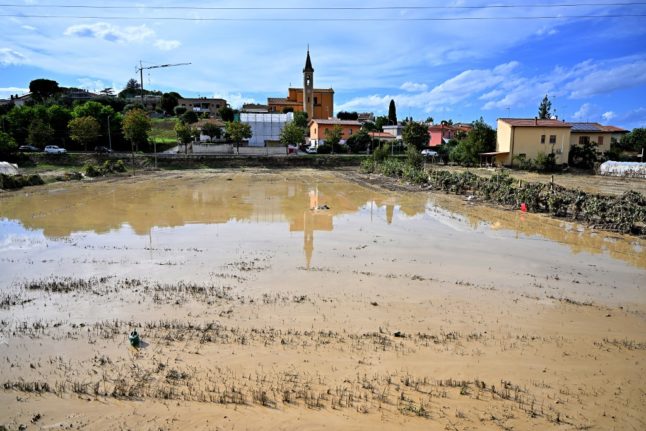After severe storms and flash floods in the central Marche region last week left 11 dead, with two still missing, environmental organisation Legambiente said climate interventions “can no longer be put off”.
“The climate crisis is no joke,” the group said in a press release published on Saturday. “The flooding that hit Le Marche is yet another alarm bell that the planet is sending us.”
IN PHOTOS: Devastation after deadly flash floods hit central Italy
Italy was hit by a total 64 floods between January and September 2022, according to the latest data from Legambiente’s Città Clima (‘Climate City’) Observatory, with some areas worse affected than others.
As the majority of Italy’s floods occur in the autumn and winter, it’s feared that the total figure for 2022 will be higher than for 2021.
Disasters like the one that hit Marche are difficult to predict, but data from the most recent Città Clima Observatory’s report, published in November of last year, shows which parts of the peninsula have suffered the greatest number of extreme weather events since 2010, giving an idea of the areas most at risk.
Data showed these were mainly large cities such as Rome, Bari, Milan, Genoa and Palermo, and coastal areas, particularly the coasts of Romagna, northern Marche, and eastern Sicily.

Sicily has been the worst-hit region in recent months, battered by eight floods so far this year and 14 in 2021, the Città Clima interactive map shows. Palermo, Catania and Syracuse have each experienced multiple floods in the past couple of years.
Lazio has also been hard hit, experiencing six flooding events so far in 2022 and ten in 2021, the majority of which occurred in Rome.
READ ALSO
- Climate takes back seat in Italy’s election campaign despite extreme events
- Deadly floods force Italy’s politicians to face climate crisis
Capital city Rome experienced by far the highest number of extreme weather events: 56 in total, of which 13 involved such heavy rainfall it caused damage to infrastructure and 21 necessitated a partial closure of metro lines.
Bari, the capital of Puglia, was the next worst hit, with a total of 41 events, 20 of which were floods and 18 of which took the form of tornados or whirlwinds that caused damage to the city.
Milan experienced 30 events, of which 20 were a result of river flooding.
The metropolitan area of Naples experienced 31 events, 18 of which occurred in Naples itself, while Genoa was hit by 21 events variously consisting of flooding, torrential rainfall and whirlwinds, and Palermo experienced 15.
A total of 132 extreme weather events were recorded in Italy between January and July 2022 – more than the annual average for the last decade, Legambiente reported in its press release.

There have been a total of 510 floods in Italy from 2010 to September 2022, 88 of which happened in 2021, according to the organisation’s statistics.
The association urged the government to take urgent action, arguing that Italy is currently the only major European country that lacks climate adaptation plan, which it says has been on hold since 2018.
“There is no more time to waste,” said Legambiente president Stefano Ciafani.
“If the plan is not approved in a very short timeframe, we risk seeing disastrous social, environmental and economic impacts over the next few years.”



 Please whitelist us to continue reading.
Please whitelist us to continue reading.
Member comments